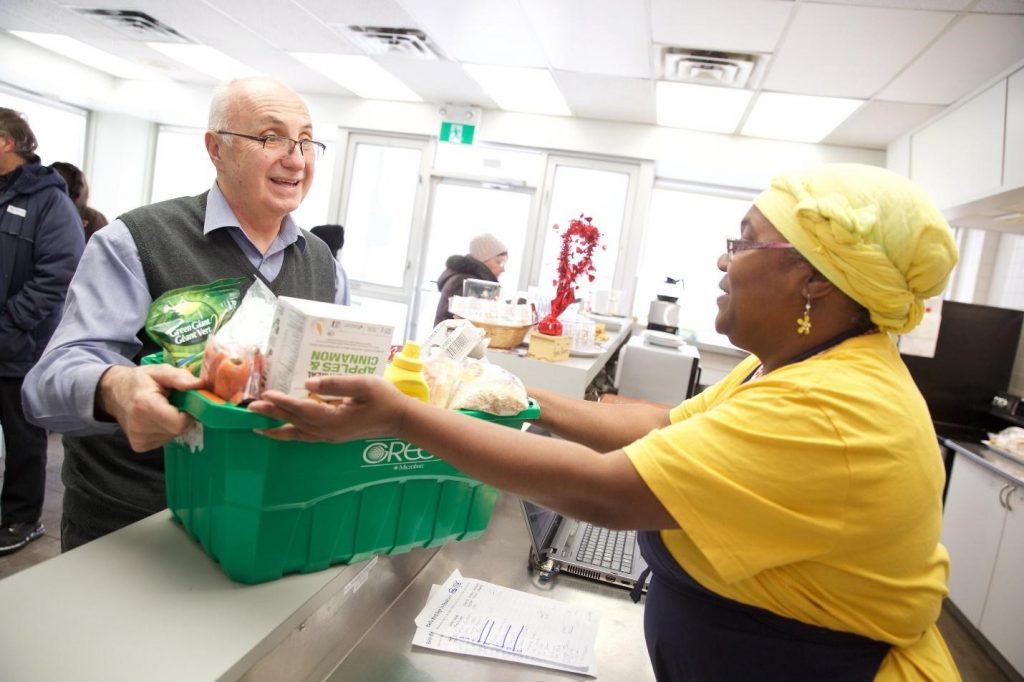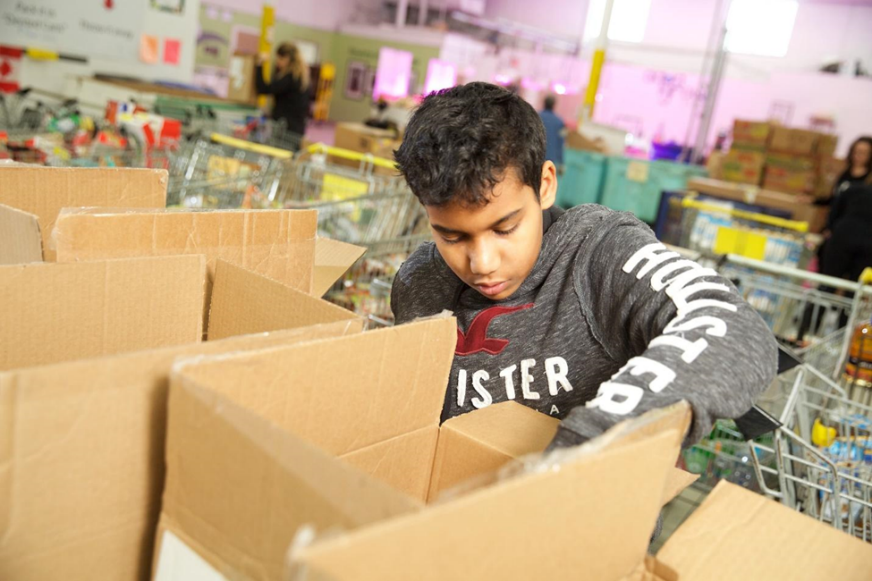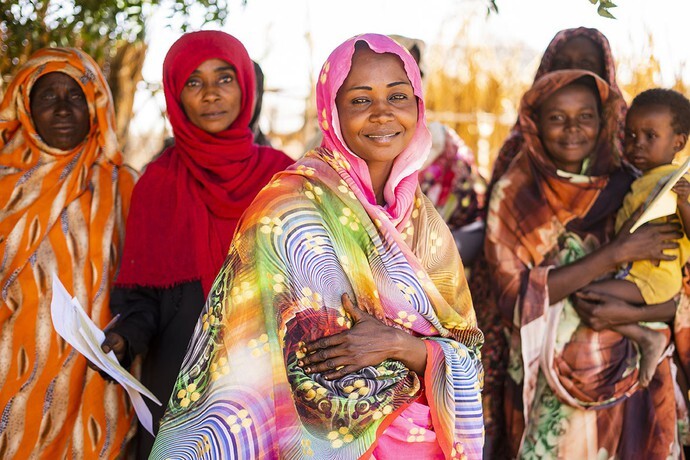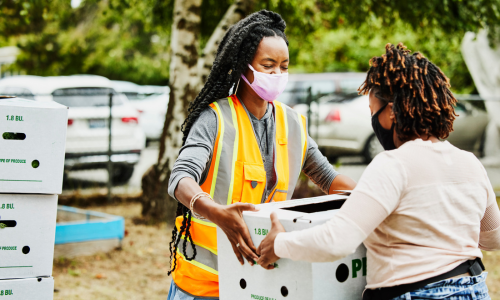It can be tempting to think of hunger as a far-off problem faced only by developing countries, but the reality is, it’s an issue in our own backyard. It lives quietly in your neighbourhood and town, and statistically speaking, you probably know someone who has had to use a food bank at one time or another in their lives. Job loss, disability, or underemployment are just a few reasons that could force a person to ask for help at a food bank. Every month, over 850,000 people experience food insecurity and use the services of a food bank in Canada. Let that sink in for a minute.
So, what is food insecurity?
A person or family is “food insecure” when they worry that they won’t be able to afford enough food, eat suboptimal food because they can’t afford better, or skip meals because they are unable to purchase enough food. Living with hunger means having to make impossible choices. No one should have to choose between rent or food.
When we look more deeply at the composition of households accessing food banks, we uncover a map of food insecurity.
Among Canadians experiencing food insecurity, 44 percent of single Canadians are accessing food banks even though they make up 28 percent of all Canadian households. Lone-parent households account for 22 percent of those accessing food banks, though they make up only 10 percent of all Canadian households.
While First Nations, Métis, and Inuit people accounted for 14 percent of people receiving food from food banks nationally in the latest research done by Food Banks Canada, this figure jumps to 29 percent in small towns and rural areas, and to more than 70 percent in northern Canada which is even more vulnerable.
Poverty Is a Root Cause of Hunger
Although statistics differ from region to region, yearly, the rate of food bank usage has remained stubbornly high in Canada. How can this be? The answer is poverty. The root cause of hunger is poverty, which hasn’t been fully addressed in our country. This is a tremendous disservice to the 1 in 6 people using food banks who are, or have recently been employed. It’s also turning our backs on the 36 percent of food bank users who are children and youth and the 8 percent who live on a pension, all of whom need basic nutrition to be able to learn, grow, and live to their fullest potential.

Local Food Banks Are Innovating
Innovative, adaptive, and creative are three words you might not think of when describing a food bank. Food banks are probably more than what most people imagine them to be. Over 640 food banks in a network across the country provide more than just critical food to people facing urgent need. They are on the frontlines of understanding each client’s circumstances and their community’s cultural and regional preferences. Their innovative and adaptive efforts have helped source fresh produce for their clients through establishing large-scale donations from farmers, retailers, and local producers.

A Single Action Can Have a Big Effect
It’s important to understand that hunger is a complex problem and must be taken seriously. Each person can make a difference! We encourage everyone to try to understand the different causes behind hunger and work with us towards a solution.
What can you do to help? Find your local food bank and donate funds, food, or your time. Food banks depend on their local communities to lend a hand any way they can. Contrary to popular belief, they are not government funded and rely heavily on local fundraising, food donation, and volunteers to run. There are many meaningful ways to give, and we are grateful for them all.

How We Help at Food Banks Canada
Our mission at Food Banks Canada is to provide national leadership to relieve hunger today and prevent hunger tomorrow in collaboration with the food bank network in Canada. We work collaboratively with a network of provincial associations and over 640 local food banks throughout the country, all with the common goal of eliminating hunger. Our vision of a Canada where no one goes hungry is an attainable one if all levels of government, business, and community work together to make it a priority.
Our work is focused on three core areas:
- raising food and funds to share with the food bank network;
- delivering programs and services to food banks to support their work and develop self-sufficiency in Canadians living with hunger; and
- influencing policy through research, awareness raising and advocacy to find long term solutions to hunger and reduce the need for food banks.
We can make a difference together. Corporations and businesses can make a difference. Governments can make a difference. We can make a Canada where no one goes hungry.
To learn more about Food Banks Canada, or to make a donation, please visit their Charity Profile Page.
Updated on November 1, 2024
Donate Now




